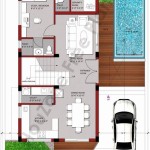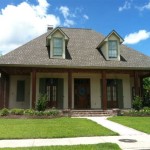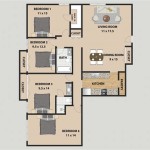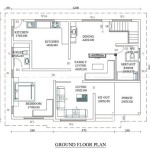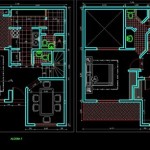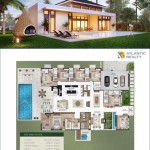Unlocking the Potential of Upside House Plans: A Comprehensive Guide
Upside house plans, also known as reverse living house plans or inverted floor plans, offer a unique approach to home design. This architectural style prioritizes placing the main living areas on the upper levels of the home, while relegating bedrooms and other private spaces to the lower floors. This seemingly simple inversion offers numerous advantages, making upside house plans a compelling option for a variety of homeowners.
Maximizing Views and Natural Light
One of the primary benefits of upside house plans is the enhanced access to views and natural light. By positioning the main living areas, such as the kitchen, dining room, and living room, on the upper floors, homeowners can capitalize on elevated perspectives. This is particularly advantageous for properties with scenic surroundings, whether it’s a coastal vista, a mountain range, or a cityscape.
Enhanced Privacy
While maximizing exposure to the outside world on the upper levels, upside house plans simultaneously offer increased privacy on the lower levels. Tucking bedrooms and bathrooms away on the ground floor provides a sense of seclusion and tranquility, shielded from the street and neighboring properties. This separation of public and private spaces creates a more harmonious living environment.
Ideal for Sloped Lots
Upside house plans are particularly well-suited for sloped or hillside lots. Building into the slope allows the lower level to be partially submerged, minimizing excavation costs and environmental impact. The upper levels can then project outward, taking full advantage of the elevated terrain and maximizing views.
Open Floor Plans and Indoor-Outdoor Living
The elevated main living area in upside house plans often lends itself to open floor plans, creating a spacious and airy feel. This design also facilitates seamless indoor-outdoor living, with balconies, decks, and patios easily accessible from the main living spaces. This connection to the outdoors expands the functional living area and enhances the overall living experience.
Design Flexibility and Customization
Upside house plans do not adhere to a rigid set of rules, offering considerable flexibility in design and customization. The lower levels can be adapted to accommodate a variety of needs, from guest suites and home offices to recreational rooms and storage areas. The upper levels can be configured to suit individual preferences, with options for vaulted ceilings, expansive windows, and various kitchen and dining layouts.
Energy Efficiency Potential
While not inherent to the design itself, upside house plans offer the potential for increased energy efficiency. By strategically positioning windows and incorporating appropriate insulation, homeowners can optimize natural light and ventilation, reducing reliance on artificial lighting and climate control systems. The placement of bedrooms on the cooler lower levels can also contribute to energy savings during warmer months.
Considerations for Upside House Plans
While upside house plans offer numerous advantages, there are some considerations to keep in mind. Accessibility can be a concern, particularly for individuals with mobility challenges. Stairs are an integral part of the design, and incorporating elevators or lifts may be necessary to ensure accessibility for all occupants. Additionally, the cost of construction can sometimes be higher due to the complexity of building on sloped lots or the structural requirements of cantilevered upper levels.
Variety of Architectural Styles
Upside house plans can be adapted to a wide range of architectural styles, from contemporary and modern to traditional and craftsman. The inverted floor plan serves as a foundation upon which various aesthetic elements can be incorporated, allowing homeowners to create a home that reflects their personal style and preferences.
Choosing the Right Upside House Plan
Selecting the right upside house plan requires careful consideration of various factors, including the site characteristics, lifestyle needs, and budget. Consulting with an experienced architect or home designer is crucial to ensure the chosen plan maximizes the benefits of the inverted floor plan while addressing any potential challenges. Careful planning and thoughtful design can result in a unique and functional home that perfectly suits the needs and desires of its occupants.
Long-Term Value and Resale Potential
The unique features and advantages of upside house plans can contribute to their long-term value and resale potential. The desirable aspects of maximized views, enhanced privacy, and open floor plans can appeal to a wide range of buyers, making these homes a potentially sound investment. The adaptability of the design to various lifestyles and the potential for energy efficiency further enhance their marketability.

50 Upside Down Homes Ideas House Plans Design Floor

The Upside Down House Saint Gobain Self Build

Upside Down Living The Trend Turning Traditional Interior Design On Its Head

Double Story House Plans Upside Down Designs Reverse Living Seabreeze Apartment Floor Rectangle Two

Upside Down Coastal House Plan 970015vc Architectural Designs Plans

Reverse Living House Plans Beach Homes W Inverted Floor

87 Upside Down Living Ideas House Plans Floor Design

Upside Down Coastal House Plan 970015vc Architectural Designs Plans

Reverse Living Why You Should Consider An Upside Down Home Design Promenade Homes

11 Houses Plans Ideas Upside Down House Floor

